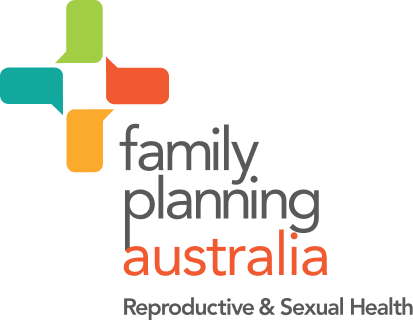Approximately 233, 947 (1 per cent) of Australians had chronic hepatitis B in 2017. Of these, 21% were born in northeast Asia, 17% in southeast Asia and 11% were Aboriginal and Torres Strait Islander peoples.(11) Most of those acquiring hepatitis B virus (HBV) overseas were infected at birth or in early childhood. There are also higher rates of hepatitis B in men who have sex with men, inmates of correctional facilities, and injecting drug users.
Since 2000, there has been a universal neonatal vaccination program for hepatitis B in Australia, with a school catch-up program. Therefore most young people (born after 1991) should have been vaccinated against hepatitis B. Rates of new hepatitis B infections have declined by 13% in Australia in the last 5 years. In 2017 there were 6,102 newly diagnosed infections, the notification rate of which has also declined.
In 2020 it was estimated that 27% of people with hepatitis B in Australia remain undiagnosed , so there is an important role for serological testing as part of STI screening. Testing for confirmation of vaccination status is also important because many young adults will have missed the booster ...
Buy now
History
Buy now
Examination
Buy now
Investigations
Buy now
Management
Buy now
Contact tracing
Buy now
7.
Australian STI Management Guidelines for use in Primary Care [internet]. Australasian Sexual Health Alliance; 2019. [Updated 2019]. Available from: http://sti.guidelines.org.au/.
Close
10.
Australasian Contract Tracing Guidelines [internet]. Australasian Society for HIV, Viral Hepatitis and Sexual Health Medicine (ASHM), Australian Government, Department of Health; 2021 (under review). Available from: http://contacttracing.ashm.org.au/.
Close
12.
Haggerty C, Gottleib SL, Taylor BD, Low N, Xu F, Ness RB. Risk of sequelae after Chlamydia trachomatis genital infection in women. J Infect Dis. 2010;201(Suppl 2):S134-55.
Close
14.
Templeton D, Jin F, Imrie J, Prestage GP, Donovan B, Cunningham PH, et al. Prevalence, incidence and risk factors for pharyngeal chlamydia in the community based Health in Men (HIM) cohort of homosexual men in Sydney, Australia. Sex Transm Infect. 2008;84(5):361-3.
Close
15.
Bernstein K, Stephens SC, Barry PM, Kohn R, Philip SS, Liska S, et al. Chlamydia trachomatis and Neisseria gonorrhoea transmission from the oropharynx to the urethra among men who have sex with men. Clin Infect Dis. 2009; 49(12):1793-7.
Close
16.
The Royal Australian College of General Practitioners (RACGP). Guidelines for preventive activities in general practice. 9th ed. East Melbourne, Victoria: RACGP; 2018.
Close
18.
Broady, T., Chan, C., Bavinton, B., Mao, L., Molyneux, A., Delhomme, F., Power, C., Fraser, N., Prestage, G., & Holt, M. (2021). Gay Community Periodic Survey: Sydney 2021. Sydney: Centre for Social Research in Health, UNSW Sydney
Close
19.
McDonagh P, Ryder N, McNulty A, Freedman E. Neisseria gonorrhoeae infection in urban Sydney women: prevalence and predictors. Sex Health. 2009;6:241-4.
Close
20.
Field N, Clifton S, Alexander S, Ison CA, Hughes G, Beddows S, et al. Confirmatory assays are essential when using molecular testing for Neisseria gonorrhoea in low-prevalence settings: insights from the third National Survey of Sexual Attitudes and Lifestyles (Natsal-3). Sex Transm Infect. 2015;91(5):338-41.
Close
22.
Cornelisse V. Could saliva be the main driver of gonorrhoea transmission? RACP Quarterly. 2018;March/April:26-7.
Close
23.
McGowin C, Anderson-Smits C. Mycoplasma genitalium: an emerging cause of sexually transmitted disease in women. PLoS Pathog. 2011;7(5):e1001324
Close
27.
Bradshaw C. Vaginal Symptoms. In: Russell D BD, Fairley C, editor. Sexual Health Medicine. East Hawthorn, Victoria: IP Communications; 2005. p. 72-86.
Close
29.
Cunningham A, Taylor R, Taylor J, Marks C, Shaw J, Mindel A. Prevalence of infection with herpes simplex virus types 1 and 2 in Australia: a nationwide population based survey. Sex Transm Infect. 2006;82:164-8.
Close
30.
Corey L, Wald A, Patel R, Sacks SL, Tyring SK, Warren T, et al. Once-daily valacyclovir to reduce the risk of transmission of genital herpes. N Engl J Med. 2004;350(1):11-20.
Close
32.
Chow E, Read T, Wigan R, Donovan B, Chen M, Bradshaw C. Ongoing decline in genital warts among young heterosexuals 7 years after the Australian human papillomavirus (HPV) vaccination programme. Sexually Transmitted Infections. 2015;91(3):214-9.
Close
34.
Koutsky L. Epidemiology of genital human papilloma virus infection. Am J Med. 1997;102(5A):3-8.
Close
40.
Department of Health. Infectious syphilis outbreak. [Internet]. Australian Government; 2019.
Close
43.
Medland N, Chow E, Read T, Ong J, Chen M, Denham I. Incident HIV infection has fallen rapidly in men who have sex with men in Melbourne, Australia (2013-2017) but not in the newly-arrived Asian-born. BMC Infect Dis. 2018;18(1):410.
Close
47.
Australasian Society for HIV, Viral Hepatitis and Sexual Health Medicine (ASHM). A guide for clinicians to discuss Undetectable = Untransmittable (U=U). 2018.
Close
50.
Goller JL, Coombe J, Bourne C, Bateson D, Temple-Smith M, Tomnay J, Vaisey A, Chen MY, O Donnell H, Groos A, Sanci L, Hocking J. Patient-delivered partner therapy for chlamydia in Australia: can it become part of routine care? Sex Health. 2020 Aug;17(4):321-329. doi: 10.1071/SH20024. PMID: 32741430.
Close
53.
NSW Health Education Centre Against Violence (ECAV); Medical and Forensic Management of Adult Sexual Assault. 2nd Ed. 2016.
Close
